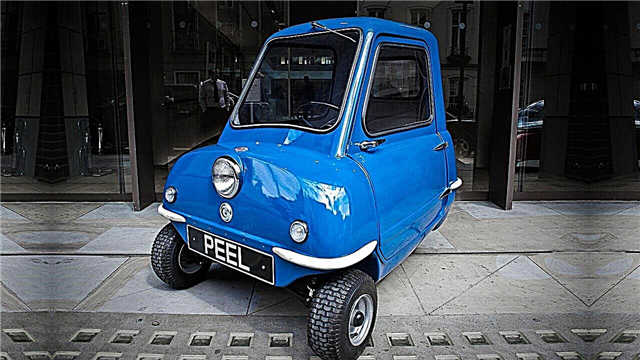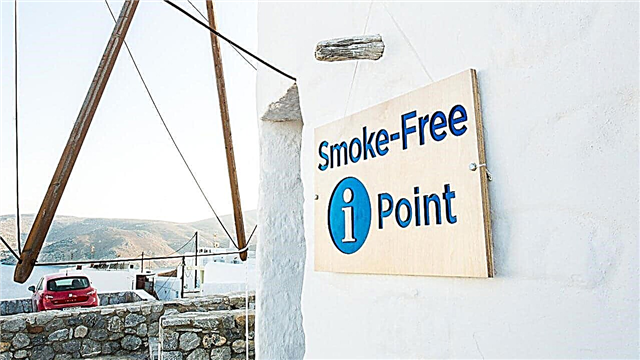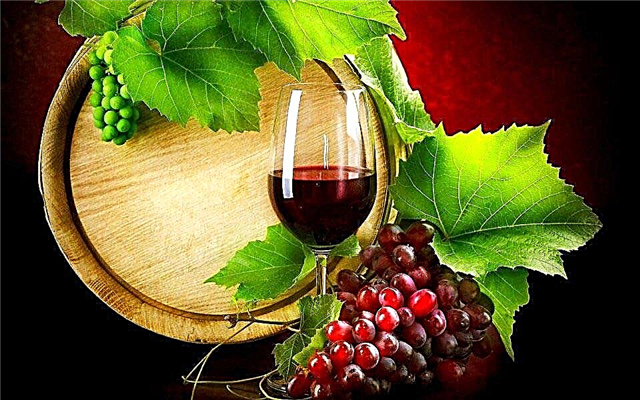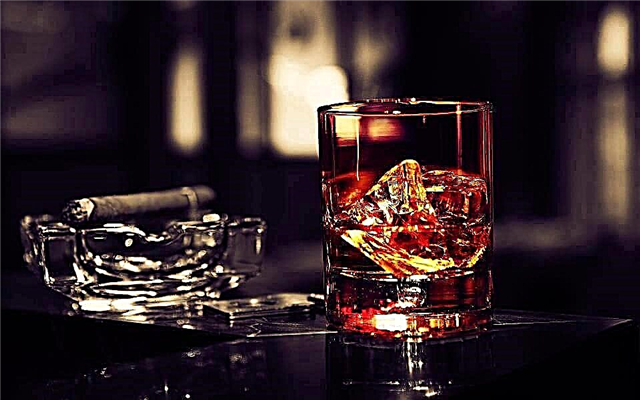It’s good when the shelves are full of goods. It is full of products on the labels of which are written "Eco", "natural composition", "made in accordance with GOST" and other attractive things.
It’s bad that part of these products is an outright fake, which in the best case will “eat” your money, and in the worst case it can be harmful to your health.
Let's take a look at the most fake products in Russia and find out how you can verify their authenticity.
10. Red caviar
 This delicacy is a real storehouse of nutrients. It is rich in iodine, contains phosphorus, magnesium, iron, vitamin D, B vitamins, calcium and potassium. That's just all of these natural resources are not available if you purchase a fake made from seaweed and gelatin.
This delicacy is a real storehouse of nutrients. It is rich in iodine, contains phosphorus, magnesium, iron, vitamin D, B vitamins, calcium and potassium. That's just all of these natural resources are not available if you purchase a fake made from seaweed and gelatin.
How to recognize a fake:

- To choose the best red caviar, you can focus on the rating of Roskachestva.
- When buying, pay attention to the composition, it should not contain gelatin, eggs, oils and milk. And there should be a name for the fish from which caviar, salt and a pair of preservatives were extracted. For example, E400 (also known as glycerin) and E200 (so that bacteria do not “plant” in the caviar).
- At home, it is easiest to recognize a fake if you throw a couple of eggs in boiling water. If the egg has lost its shape and begins to dissolve - it means that this is not real caviar. The eggs from real fish will not change shape, and the protein in it will curl.
9. Sour cream
 Beautiful bright jars of sour cream and beckon to remove them from the shelf. Here are just a classic sour cream made from cream and sourdough, some of these products have little in common.
Beautiful bright jars of sour cream and beckon to remove them from the shelf. Here are just a classic sour cream made from cream and sourdough, some of these products have little in common.
They contain vegetable fat instead of animal fat, and soy instead of milk protein.
How to recognize a fake:
- To check the naturalness of sour cream, you need to dissolve a small amount of it in boiling water. The fake will precipitate, the natural product will completely dissolve.
- If possible, try to buy sour cream from a local producer, since it is not economically feasible for him to produce a fake product designed for local consumers.
8. Honey
 This is one of the most popular counterfeit food products not only in Russia, but also in the world market. Moreover, you can buy "linden honey" not only in the store, but also at the rural fair.
This is one of the most popular counterfeit food products not only in Russia, but also in the world market. Moreover, you can buy "linden honey" not only in the store, but also at the rural fair.
Water, starch, sugar syrup are added to it, they sell old and several times melted honey, devoid of any nutritional value. And these are far from the only, but only the most common ways to counterfeit honey.
How to recognize a fake:

- In good honey there should be no foam, and in its taste - sourness (a sign of immature or spoiled product).
- Real honey has a rich smell, and the more syrup it contains, the weaker the smell.
- To determine the naturalness of thickened honey, rub a drop between your fingers. Felt roughness and grains? This is sugar processed by bees. If it feels like you are rubbing fat, you have real honey in front of you.
7. Shrimp
 When buying frozen shrimp, we buy frozen water with them. After all, these crustaceans are frozen immediately after capture. And in one "shrimp kilogram" can contain from 10 to 40 percent of the ice.
When buying frozen shrimp, we buy frozen water with them. After all, these crustaceans are frozen immediately after capture. And in one "shrimp kilogram" can contain from 10 to 40 percent of the ice.
On the package with shrimp their hummingbirds are indicated - that is, the number of shrimp per kilogram. For example, 100/200 (that is, in one kilogram from 100 to 200 pieces of shrimp). But this is only true if the shrimp are unpeeled. But if the shrimp is peeled or without a head, then the numbers indicate how many shrimps are contained in 1 pound (0.45 kg).
Another problem with shrimp is that when breeding in the coastal zone they are usually pumped with antibiotics (most often with chloramphenicol). So these crustaceans are less sick.
How to recognize a fake:
- It’s best not to take peeled shrimps, as they may be tinted fish fillets.
- Buy only Atlantic shrimp, they have the least amount of antibiotics.
- If the bag of small shrimp is heavy, ice will most likely be under their shells.
- If these are not real shrimps, but their imitation, this is usually indicated on the label, so read the product description carefully.
6. Saffron
 One of the most popular and expensive spices in the world gives the dishes a beautiful color and aroma. It also has a preservative effect, and food prepared with saffron can be stored for several days.
One of the most popular and expensive spices in the world gives the dishes a beautiful color and aroma. It also has a preservative effect, and food prepared with saffron can be stored for several days.
However, the cost of real saffron seasoning is very high. And this is not surprising, because the production of one kilogram of spice takes 200 thousand flowers of sowing crocus.
How to recognize a fake:
- Real saffron dyes water in a deep red-orange color. Substitutes (turmeric and safflower) - in yellow.
- 90% of saffron is produced in Iran; it is also grown commercially in India and Spain. Therefore, when buying saffron, pay attention to the country of origin.
- If possible, smell the offered spice. Real saffron has a very intense smell with a slight bitterness.
- Saffron is expensive, 1 gram will cost 400 rubles and above.
- It is advisable to buy saffron in the form of threads, they have a dark orange color, are thinned on one side and slightly flattened on the other. But they do not have curvature and fringe.
5. Sausage and sausages
 Such products beloved by Russians are also favorites of dishonest manufacturers. Not enough meat? No problem! But starch - oh-hoo how much!
Such products beloved by Russians are also favorites of dishonest manufacturers. Not enough meat? No problem! But starch - oh-hoo how much!
Instead of pork and beef they put cheaper meat - chicken. And they don’t indulge in that, and sausages, in the name of which there is the word “Chicken”, in fact, can contain no more than 10% of chicken meat.
How to recognize a fake:
- The farther from the beginning of the composition is the ingredient (the same chicken meat), the less it is there.
- The shorter the composition, the better. Ideally, it should have: meat, salt, water and spices. The more ingredients in the composition, the less meat in sausage and sausages.
- The stronger the smell of sausage, the worse. With the help of aromatic seasonings, they usually try to mask a spoiled product or sausage with a lot of soy.
- The surface of a good sausage should be flat, without a watery base, and the pieces of bacon should be the same size.
- It is better to buy a sausage made in accordance with GOST, and not according to TU. Because in the second case, you agree that its composition can be no more than 50% of meat, and the rest is soy, starch, dyes and artificial flavors.
4. Bread
 Lush bread with a fragrant crust and a snow-white crumb is a delight for buyers' eyes and is number 1 in any food rating. However, the virgin whiteness of the “inner world” of bread may be due to the use of so-called “improvers” (urea, sodium pyrosulfite, calcium peroxide, etc.), which bleach flour.
Lush bread with a fragrant crust and a snow-white crumb is a delight for buyers' eyes and is number 1 in any food rating. However, the virgin whiteness of the “inner world” of bread may be due to the use of so-called “improvers” (urea, sodium pyrosulfite, calcium peroxide, etc.), which bleach flour.
And even if you buy brown bread, you can run into a fake. Instead of natural, you may come across bread dyed with synthetic dyes.
And finally, instead of premium flour, unscrupulous manufacturers use grade 1 flour. Here, unfortunately, it is possible to determine the counterfeit only with the help of a laboratory examination.
How to recognize a fake:
- Natural bread is stored for no longer than 24 hours without packaging and 72 hours in packaging. If the inscription on the package promises longer storage, it means that preservatives were not dispensed with.
- High-quality bread will quickly restore its shape with easy pressure on its surface. If there is a dent, then the bread is not baked, and the crumb in it is too sticky.
- Too sweet and unnatural aroma of brown bread indicates the presence of dye (such as caramel).
- Artificially colored and containing dyes such as cocoa and carmine bread has a very dark and uniform brown color. In real black bread, the fibers of the flour are not evenly distributed, and the color is also uneven.
3. Smoked fish
 Tasty, fragrant fish is an indispensable addition to beer, and is good in itself. Do you know why smoked fish sometimes have a special aroma? From a flavor called liquid smoke. There may be an allergic reaction to it, and in some countries, "liquid smoke" of artificial origin is banned as a carcinogen.
Tasty, fragrant fish is an indispensable addition to beer, and is good in itself. Do you know why smoked fish sometimes have a special aroma? From a flavor called liquid smoke. There may be an allergic reaction to it, and in some countries, "liquid smoke" of artificial origin is banned as a carcinogen.
How to recognize a fake:
- Fish treated with "liquid smoke" has a very strong smoked smell.
- If the fish is smoked by all the rules, its meat has a yellowish tint, and fat (of the same tint) is in the stomach area.
- Cut fish, smoked with liquid smoke, has the color of a simple herring, and fat is almost not allocated.
- Therefore, if you buy smoked fish, do not be shy and ask the seller to cut it.
2. Olive oil
 For the Italian mafia, the business of falsifying olive oil is a real bonanza. Back in 2011, the Italian investigating authorities reported that about 80% of olive oil, supplied from Italy, is falsified or incorrectly declared.
For the Italian mafia, the business of falsifying olive oil is a real bonanza. Back in 2011, the Italian investigating authorities reported that about 80% of olive oil, supplied from Italy, is falsified or incorrectly declared.
So if you take "real Italian olive oil", be prepared for the fact that it may turn out to be a low-grade fake mixed with the cheapest vegetable oil imported from Tunisia, Greece and Morocco.
How to recognize a fake:
- Examine the composition, it should only contain olive oil (Natural, 100% Olive Oil). If the words Mix, Polivio, Estella are present, this is a mixture that can contain only 1% olive oil.
- Well, if the label has the word DOP. This means that the entire oil production cycle, including bottling, was carried out in one controlled region.
- High-quality olive oil, once in the refrigerator, will significantly thicken, and flakes and sediment will appear on the bottom. At room temperature, the oil will return to normal.
1. Bottled Natural Water
 The top 10 most counterfeit products in Russia are headed by water, without which, as you know, “neither tud, nor syud”. According to the statement of the head of the Rostec corporation Sergey Chemezov, the percentage of counterfeit bottled water in Russia is on average from 25 to 30%. And in some regions it reaches 80%.
The top 10 most counterfeit products in Russia are headed by water, without which, as you know, “neither tud, nor syud”. According to the statement of the head of the Rostec corporation Sergey Chemezov, the percentage of counterfeit bottled water in Russia is on average from 25 to 30%. And in some regions it reaches 80%.
Chemezov proposed to solve this problem by marking water. In the meantime, we will have to independently try to distinguish good bottled water from bad.
How to recognize a fake:
- The label should indicate the number of the artesian well, as well as the date of bottling, expiration date, degree of mineralization and hardness, the composition of the water and its source (well or water supply).
- There are two categories of bottled water - the first and highest. The first one also contains ordinary water passed through an industrial filter. Only participants who comply with GOST and requirements for artesian and spring water are allowed into the major league.
- There should be no impurities and precipitation in the water.
- If the label does not indicate GOST or TU, then it is better not to take such water.












